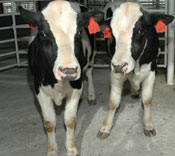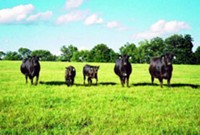Advertisement
Grab your lab coat. Let's get started
Welcome!
Welcome!
Create an account below to get 6 C&EN articles per month, receive newsletters and more - all free.
It seems this is your first time logging in online. Please enter the following information to continue.
As an ACS member you automatically get access to this site. All we need is few more details to create your reading experience.
Not you? Sign in with a different account.
Not you? Sign in with a different account.
ERROR 1
ERROR 1
ERROR 2
ERROR 2
ERROR 2
ERROR 2
ERROR 2
Password and Confirm password must match.
If you have an ACS member number, please enter it here so we can link this account to your membership. (optional)
ERROR 2
ACS values your privacy. By submitting your information, you are gaining access to C&EN and subscribing to our weekly newsletter. We use the information you provide to make your reading experience better, and we will never sell your data to third party members.
Environment
Mad Cow Disease Outbreak
Scientists cite tests that USDA could use to protect public health
by BETTE HILEMAN
January 5, 2004
| A version of this story appeared in
Volume 82, Issue 1
On Dec. 23, a single case of mad cow disease, or bovine spongiform encephalopathy (BSE), was detected in the U.S. Since then, nearly two dozen countries have announced they will no longer import U.S. beef, which could decimate the $2.6 billion export market.
Since the discovery, USDA has held daily press conferences to reassure the public about the safety of the beef supply, while some researchers have called for new regulations to test for BSE and contain its spread. USDA insists that its voluntary recall of 10,410 lb of beef associated with the BSE-infected cow was taken out of extreme caution.
BSE is caused by misfolded prion proteins thought usually to get into cows through feed made from rendered cattle. The abnormal prions induce normal prion proteins to misfold, and eventually the brain develops spongelike holes. There is no scientific evidence, the agency says, that people can contract the human form of BSE, variant Creutzfeldt-Jakob disease (CJD), so long as the cow's brain and spinal cord are stripped away from muscle before the carcass is cut up.
But in recent years, scientists have devised highly sensitive tests that have detected prions in muscle tissue of hamsters and humans infected with prion diseases, notes Jiri Safar, associate professor of neurology at the University of California, San Francisco. This research suggests that beef muscle from infected cattle also contains abnormal prions but at perhaps one-fifteenth the level that occurs in brain tissue, he explains. USDA is relying on research conducted in the late 1980s that used an insensitive test to conclude there are no prions in muscle, Safar tells C&EN.
USDA is considering a number of measures to prevent further cases of BSE. One would prohibit the sale of so-called downer cattle, those that cannot walk, for human consumption. BSE, as well as physical injuries, can prevent cattle from walking.
Another measure under consideration is to greatly expand the testing program. Out of 35 million cattle slaughtered in the U.S. each year, only about 20,000 are tested. Japan, by comparison, tests every animal, and the European Union tests all animals over 30 months of age.
Safar contends that all slaughtered cattle should be tested with a highly sensitive rapid test. "We have no data to show the real incidence of BSE in U.S. cattle. That is the problem," he says. Safar, Stanley B. Prusiner--who received a Nobel Prize for discovering that prions cause spongiform encephalopathies--and coworkers have developed a rapid, fully automated, highly sensitive assay that will be used to test all cattle in the U.K. beginning in January or February. The test is marketed by a company Prusiner founded called InPro Biotechnology.
Using this test, called conformation-dependent immunoassay (CDI), a laboratory could assay 2,000–8,000 samples a day with a turnaround time of five hours, in contrast to the USDA test, which takes seven days. Unlike other rapid tests, CDI directly measures abnormal prions at very low levels.






Join the conversation
Contact the reporter
Submit a Letter to the Editor for publication
Engage with us on Twitter